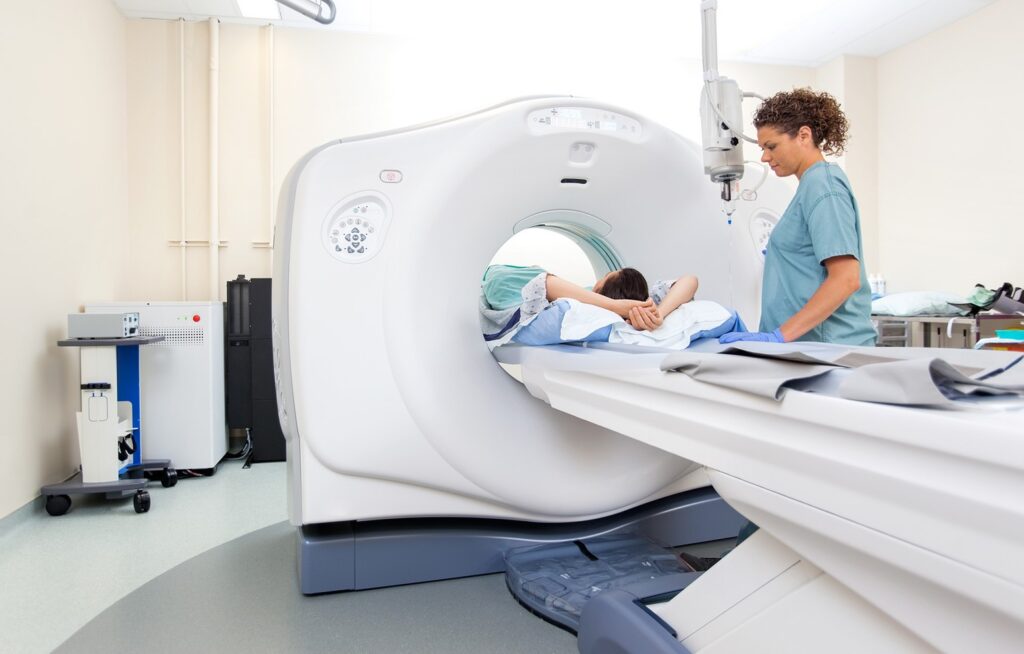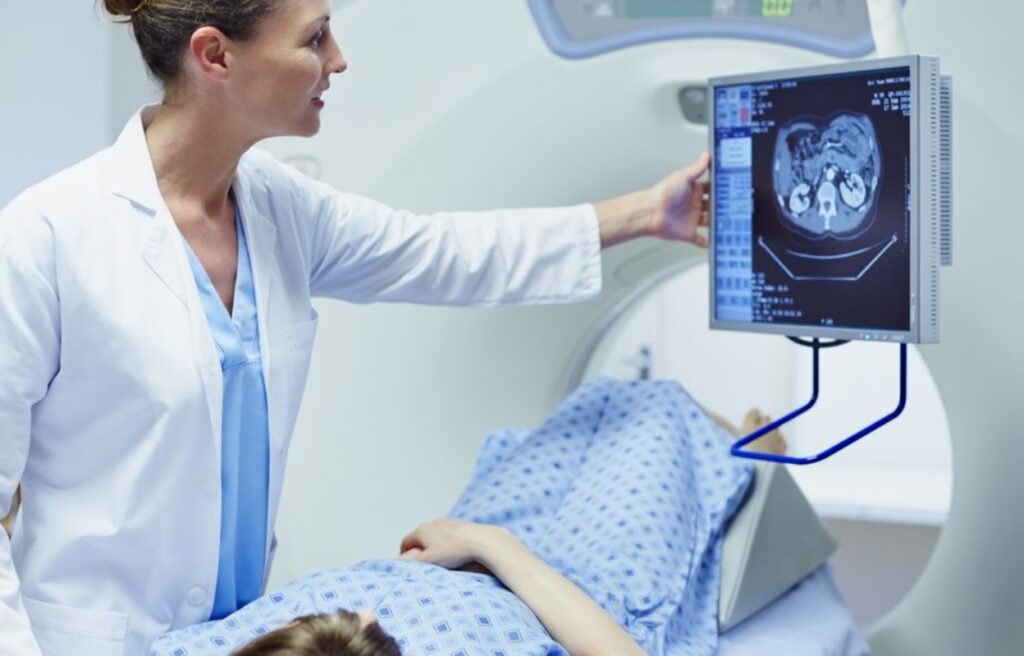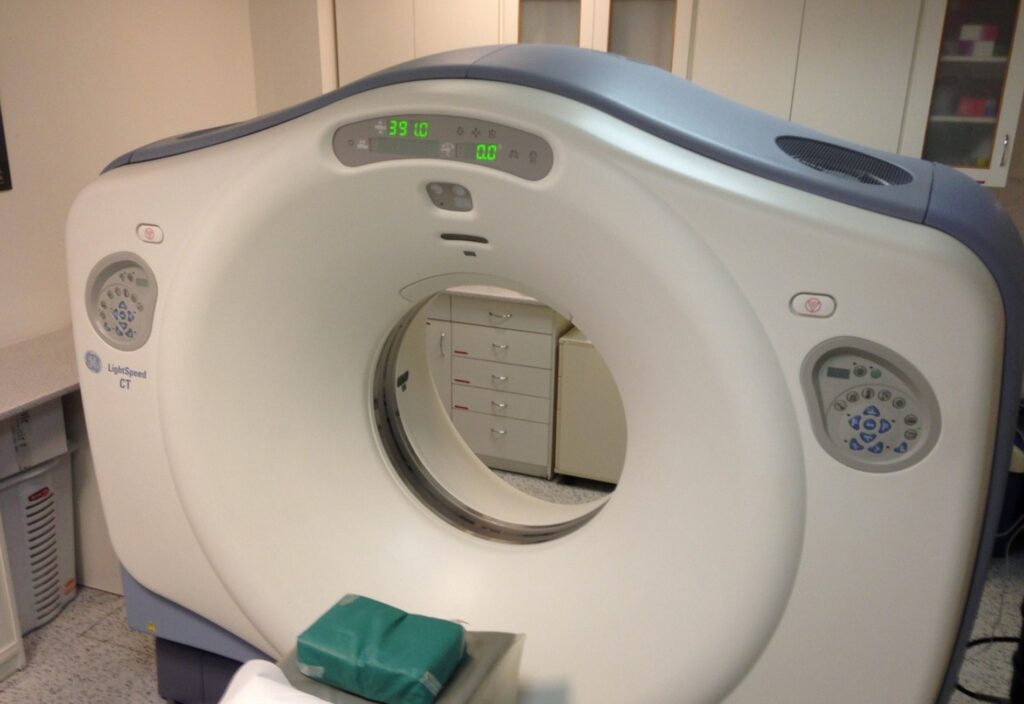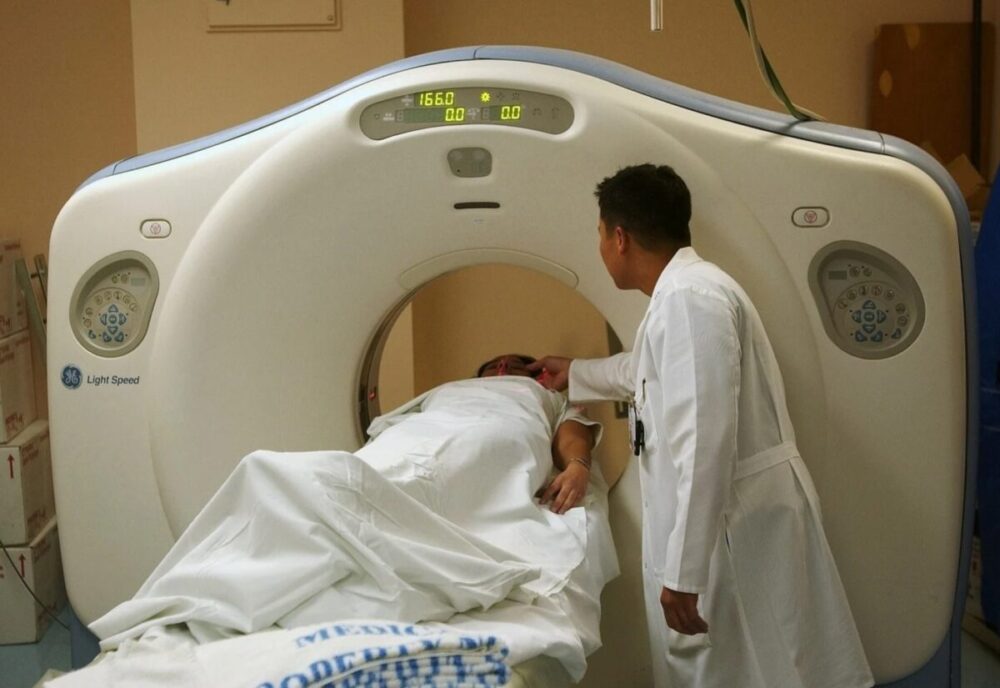One of the most expensive devices at hospitals is the CT scanner; it’s a piece of valued equipment that, from the name, scans the whole body and gives doctors an inside view of what’s going on within the body. Patients are only required to have a CT scan when the doctors have a reason to believe that there’s a strange activity taking place, but they can’t detect it or view it in an X-ray.
A patient may need a CT scanner for blood clots, tumors, bone disorders, and other kinds of abnormalities. This type of machinery projects a beam that takes a clear picture of the body and sends it to a computer so that the doctors can begin the observation and analysis process. It requires a lot of energy to do so, mostly when the scanner is used multiple times during the day.
Repeating the process heats the scanner, which is not ideal and can end up exhausting the machine. Usually, this large device combats the heat with its internal cooling system, but this also requires a lot of energy. This is why it’s vital to know how to take care of this device because not every hospital can afford to get a new one every time it breaks down since they’re very pricy.

Set the Proper Environment
Generally, every medical imaging equipment will have its guidelines based on the brand; however, there are several specifications that apply to every CT scanner. One of them is the temperature surrounding the device. There should be a certain percentage of humidity around it; this might depend on its type, but generally, it should not be less than 40% and not exceed 70%. The temperature of the room itself is also important. As mentioned before, these machines get very hot very quickly, and the heat is definitely not good, which means that it is vital that they are not in a room with a high temperature.
In an ideal setting, the temperature should be anywhere between 18°C to 22°C. One final thing you need to know, it is absolutely necessary that you maintain these conditions as long as you have a CT scanner in the room. In other words, this means that even when it is the weekend, the shift is over, or there is some kind of holiday, the machines still need to be kept in that environment. If you know that there won’t be people around the device for whatever reason, then it is essential that you set up some kind of alarm that tells you when the temperature is off, or the humidity is too high in the room. The last thing that you want to purchase new imaging equipment for a rookie mistake like this one.

Preventative Maintenance
Despite their complexities, medical imaging machines have their system that they run on just like any other device. This means that it is vital that you check up on this system every once and awhile. However, you might not understand its workings or what kind of errors you should look out for, and you’re not supposed to know either. You might not be required to fix the system yourself or even check up on it, but you are required to follow the preventative maintenance schedule and have a specialist who can see if everything is okay and whether something needs to be fixed or not.
If you don’t want to wait for an expert and you would like to know what kinds of errors you should be aware of, it is best that you visit here to learn what kind of errors the machine might be warning you about. You should also know that the expert who’ll check up on the scanner is required to do certain things, such as cleaning up the hard-drive and saving important data, getting rid of the dust around the fans, installing a system that would clean up the machine, and repair anything that needs fixing. This will be conducted as many times as the preventative maintenance schedule indicates. However, you should know that these tiny rituals can increase the scanner’s longevity as well as keep it its sharpest form.

Error Codes
You might not be an engineer who will understand each and every sign that CT scanners give off, but that still doesn’t mean that you shouldn’t learn about the common errors that might show up frequently. For instance, one of the errors that you might come across is the “Fatal Error in Image Reconstruction System,” which indicates a disrupted connection between the scanner and the computer. It also means that the device has a scanned picture already, but it cannot send it to the computer.
This is an error that comes about a lot, so it’s best that you learn how to fix it because you cannot schedule a meeting with a specialist every time this error message shows up. There are various ways that you can use to fix this problem, so you can either look them up from a trusted resource or, better yet as the engineer next time he comes as scheduled. It is best that you observe how they fix this problem so that you can handle it by yourself the next time around.
All in all, caring for medical imaging equipment is one of the most important things that should be done. Hospitals should assign a team who will make sure that these devices are regulated and are working properly. These devices are pretty expensive, and it’s a huge investment for any hospital, especially that there is usually more than one scanner, depending on the size of the hospital or clinic.
Any proper maintenance should include a regular preventative maintenance schedule, setting the ideal environment, as well as a good understanding of the common error codes that frequently come about. Remember that the temperature should always be monitored and that you can install a system that will inform you if the humidity is higher than it should be. All these things should be regularly done if you want your scanner to work properly and for the longest time possible.





